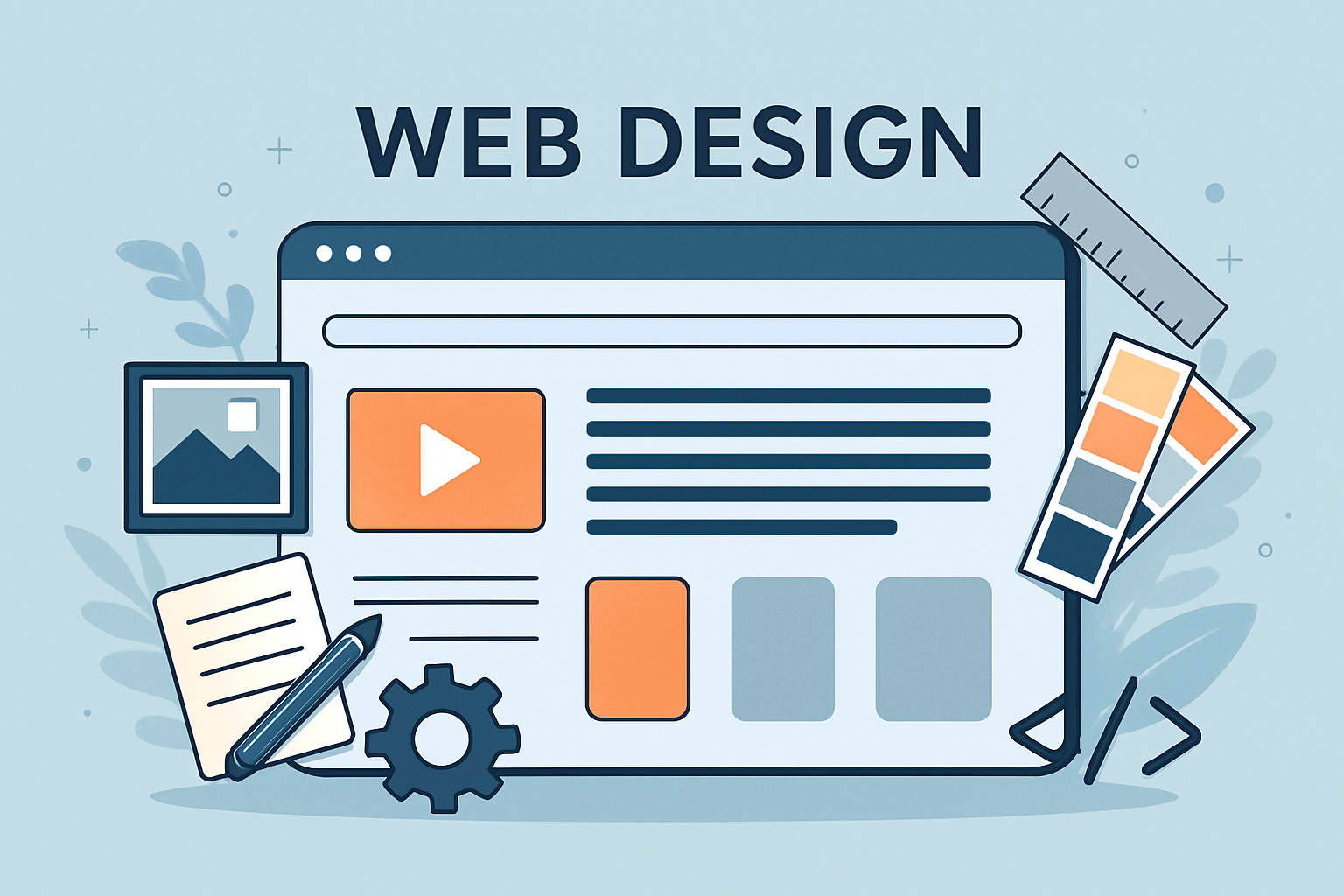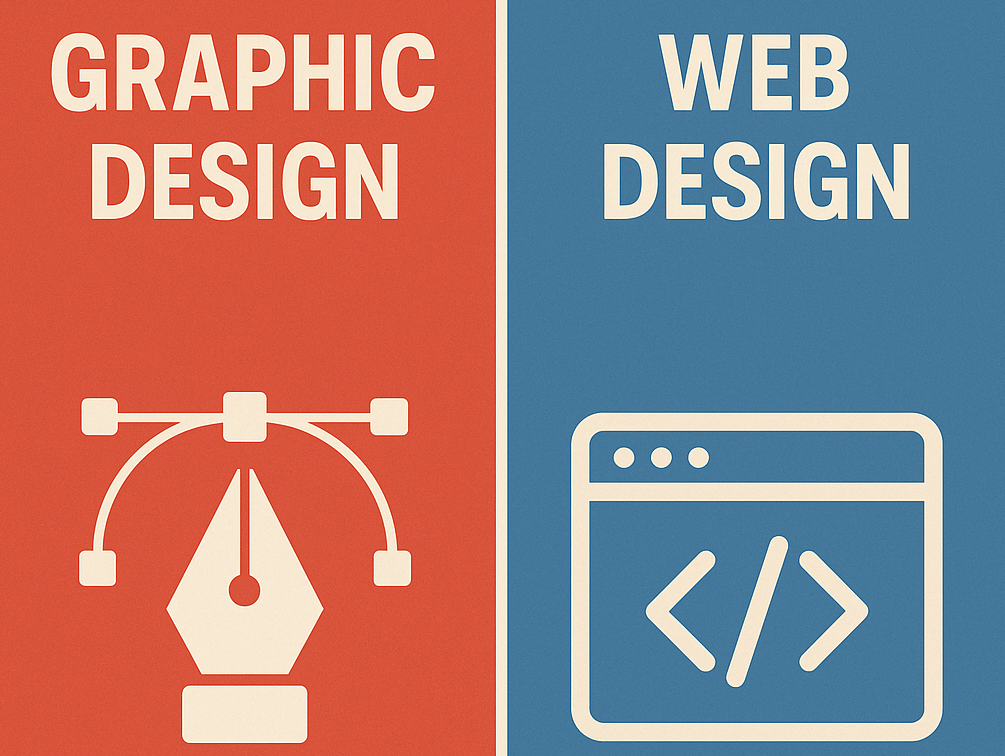Design is at the core of both stunning visuals and user-friendly websites — but graphic design and web design serve different purposes and follow distinct principles. Whether you’re a beginner or refining your craft, knowing how these fields differ will help you become a better designer.
What Is Graphic Design?
Graphic design is the art of creating visual content to communicate messages. It focuses on aesthetics, emotional impact, and brand identity. Graphic designers work on print and digital assets like:
What Is Web Design?

Web design is the process of creating websites that are visually appealing and functionally usable. It blends aesthetic design with user experience (UX) and often involves interactivity and responsiveness. Web designers work with:
- Website layouts
- Typography for screen
- UI components
- Responsive/mobile design
- Accessibility & usability
Core Principles of Graphic Design
- Balance
Equal distribution of visual weight (symmetrical or asymmetrical). - Contrast
Making elements stand out by using color, size, shape, or texture. - Alignment
Arranging elements for a clean, organized look. - Repetition
Using consistent elements (like fonts or colors) to create cohesion. - Proximity
Grouping related items together to create a visual relationship. - Hierarchy
Directing the viewer’s attention to what’s most important first. - Space
Using white space (negative space) to avoid clutter and improve readability.
Core Principles of Web Design
- Responsiveness
Designing layouts that adapt to various screen sizes (desktop, tablet, mobile). - Usability
Ensuring the site is easy to navigate, understand, and interact with. - Accessibility
Designing for users with different abilities (e.g., screen readers, color contrast). - Visual Hierarchy
Using size, color, and layout to guide users through the content. - Consistency
Keeping design and navigation elements uniform throughout the site. - Load Speed Optimization
Using compressed images and efficient code to ensure fast performance. - Interactivity
Including buttons, hover states, and transitions to engage users.
Key Differences Between Graphic & Web Design

| Feature | Graphic Design | Web Design |
|---|---|---|
| Output Format | Print or digital (static) | Dynamic, interactive, browser-based |
| Medium | Posters, ads, logos, etc. | Websites, apps, landing pages |
| User Interaction | None or minimal | High (buttons, scrolls, menus, etc.) |
| Responsiveness | Fixed dimensions | Flexible/responsive to screen sizes |
| Tools Used | Photoshop, Illustrator, InDesign | Figma, Adobe XD, HTML, CSS |
| Design Focus | Visual storytelling, branding | Usability, accessibility, performance |
Best Tools for Graphic & Web Design
Top Graphic Design Tools
- Adobe Photoshop — Best for image manipulation and creative design
- Adobe Illustrator — Ideal for vector-based graphics like logos and icons
- Gimp — GIMP (GNU Image Manipulation Program) is best known as a free and open-source alternative to Adobe Photoshop.
- Inkscape — Inkscape is best known as a free and open-source vector graphics editor, similar to Adobe Illustrator or CorelDRAW.
Top Web Design Tools
- Figma — Collaborative design tool for creating responsive website and UI prototypes
- Adobe XD — UX/UI design tool for wireframes and interactive prototypes
- Webflow — Design + build tool for responsive websites, without needing to write code
- Visual Studio Code + HTML/CSS/JS — Great for developers who prefer full control and custom code
Final Thoughts
Both graphic and web design rely on strong visual principles, but their goals, tools, and workflows are distinct. Graphic design emphasizes static visuals and emotional impact, while web design focuses on interactive user experiences across devices.
Whether you’re designing a logo or coding a layout, mastering these principles will sharpen your design sense and make your work more effective.

